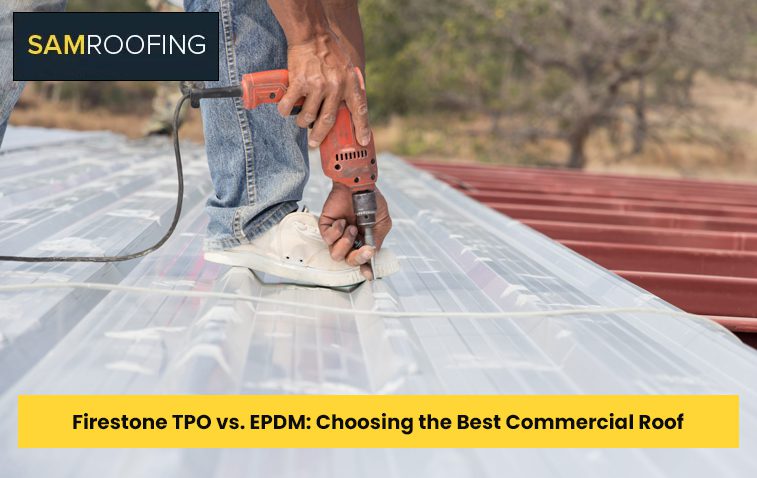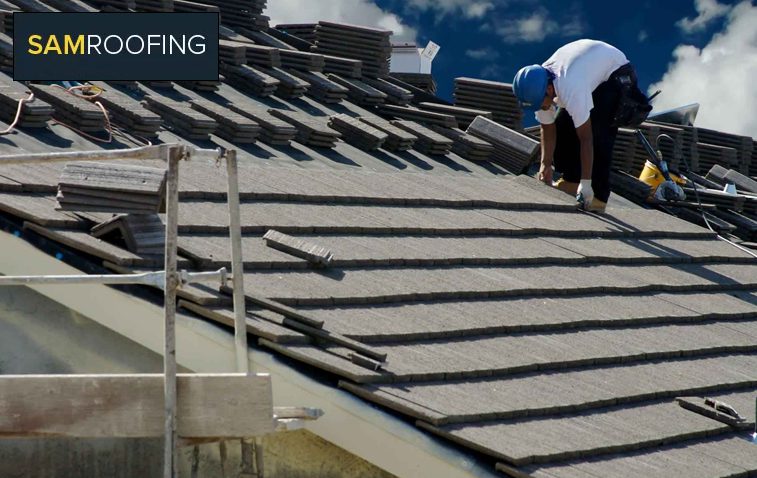Firestone TPO vs. EPDM: Choosing the Best Commercial Roof
Choosing the right roofing material for commercial buildings is crucial for long-term durability and energy efficiency. In the debate of Firestone TPO vs. EPDM, both thermoplastic polyolefin (TPO) and ethylene propylene diene monomer (EPDM) are popular choices, each with distinct advantages and limitations. The best selection depends on your building requirements, environment, and long-term maintenance needs.
Both TPO and EPDM are known for their high performance and low maintenance needs, but it is important that you understand the differences between them. Choosing the right roofing material will not only ensure the longevity of your roof, but will also ensure that your building’s energy costs are low. Both materials have certain special properties, which make them suitable for a variety of climate and environmental conditions.
TPO roofs are popular for their bright white color and energy efficiency, while EPDM roofs are known for their longevity and simplicity. While TPO is more reflective and reduces heat, EPDM offers more flexibility, which can be helpful in cold climates. It is important to understand both these materials carefully and compare their features.

Advantages of TPO Roofing System
The biggest advantage of TPO roofing system is its energy efficiency. TPO is specially designed in such a way that it reflects the sun rays, which helps keep the building cool during summers.
Energy Efficiency
The white surface of TPO helps in reducing the heat of the sun, which reduces the cost of air conditioning. It is very effective in areas where there is extreme heat. Moreover, TPO is a single layer roofing system, which makes its maintenance simple and easy. Not only does it reduce power consumption, but it also maintains a stable temperature inside the building.
Durability
TPO roofs are highly durable and are less affected by sunlight, ozone, and chemicals. This means that this material lasts longer and protects the building. In addition, this roofing material is more resistant to cracking and breaking, making it ideal for harsh weather conditions. It requires less maintenance, making it a long-lasting solution.
Environmental friendliness
TPO is also a good choice for the environment, as it is recyclable. Moreover, it does not use harmful chemicals, making it a safe option. It is also easy to install and maintain, saving both time and money in the long run. Its energy-efficient properties make it a good choice for green building construction.
Advantages of EPDM Roofing System
EPDM roofs are known for their longevity and flexibility. This material is especially useful in cold climate areas, as it expands and contracts according to changes in temperature.
Flexibility
The biggest advantage of EPDM is its flexibility. This material works well in both cold and hot climates. Its flexibility makes it a reliable option as it does not shrink in the cold and does not crack in the heat. This makes it a reliable option. It also adapts to extreme weather changes, allowing it to remain stable in a variety of conditions.
Longevity
EPDM roofs can last for 25 to 30 years or even more. Its longevity makes it an attractive option as a long-term investment. In addition, it is also simple to maintain, making it easy to maintain. It proves to be even more beneficial due to the low maintenance over time, especially in areas where there is a lot of weather fluctuations.
Chemical Resistance
EPDM roofs are highly resistant to chemicals, ultraviolet rays, and ozone. This means that this roofing material remains stable for a long time despite harsh weather conditions and pollution. It is also widely used in the chemical industry and factories. This material is suitable for buildings that are exposed to harsh conditions.
TPO vs EPDM: Comparison
When you compare TPO and EPDM, there are some key differences that can influence your decision. Both materials are durable, but they have different strengths and weaknesses.
Temperature Tolerance
TPO is a better choice for warmer regions, as its white surface reflects the sun’s rays and helps keep the building cool. EPDM, on the other hand, is more effective in colder regions, as it expands and contracts according to the temperature. If your building experiences extreme temperatures, EPDM may be more suitable for it.
Installation
The installation of TPO can be more complex and requires expertise. The installation of EPDM is simpler and can be installed in less time. This is a key difference between the two materials that you should take into account. This decision can also affect your building’s time and resources.
Maintenance
While TPO is appreciated for its energy efficiency and environmental friendliness, EPDM is chosen for its simple maintenance process and longevity. If you want a roofing material that does not require much care, EPDM may be a better choice. Both materials require regular maintenance, but EPDM is simpler and less expensive to care for.

How to Choose the Right Commercial Roof?
Now that you understand the difference between TPO and EPDM, it is important to understand which option will be right for your building. It will depend on the location, climate, and long-term needs of your building.
Consider the Climate
Climate is a big factor in choosing your roofing material. If your building is located in a warm region, TPO may be a better choice. On the other hand, EPDM may prove to be more effective in areas with a cold climate. Choosing the right material based on the weather ensures long-term stability.
Understand the Building Needs
Can your building withstand high temperatures? Do you need flexibility in the roofing material? These questions can make your decision easier. Also, keep in mind that your roofing material can also impact your energy consumption and long-term costs. This choice becomes important depending on your building’s structure and needs.
Evaluate the long-term benefits
While both TPO and EPDM have distinct advantages, it’s important that you evaluate the long-term benefits. Do you want a roofing material that is durable, or a material that requires less maintenance? Choosing the right material from a long-term perspective can save you time and money and increase the lifespan of your roof.
Both Firestone TPO and EPDM are excellent choices for commercial roofs, but your decision will depend on your building’s needs and climate. In the Firestone TPO vs. EPDM comparison, Firestone TPO roofs are ideal for warmer areas, while EPDM performs better in colder regions. Understanding the differences between these two materials is essential for choosing the best option for your building. The right roofing material will not only protect your property but can also reduce your energy costs, ensuring a safe and durable roof in the long term.